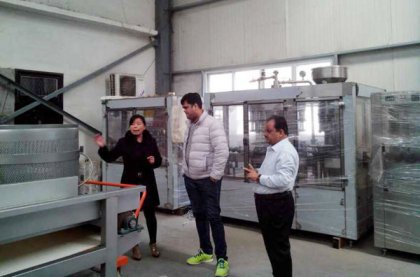Design determines process, process may decide design. Components with the same function can be designed with different structures, some of which are easy to process and ensure machining accuracy, but some structures are difficult to process, or even unable to process, so designers must understand the process. For the designed mechanical products, the technological process that each part should choose, the dimension, tolerance, roughness and technical conditions marked by each part drawing have a direct impact on the quality of the technological process and the length of the production cycle. According to the characteristics of part drawing and parts material, one or more of the following processes can be selected, such as cutting, casting, forging, sheet metal, stamping, extrusion, etc. Each of these processes has its most reasonable economic accuracy. So after the determination of part drawings and materials, to a certain extent, the process is determined.
When the shape of the part is more complex and the size is larger, it is difficult to forge. If the casting performance or welding performance is adopted, the structure should also meet the requirements of casting or welding. Casting or welding? Die forging or free forging? If the parts are produced in small batches and the cost of wooden dies and moulds exceeds the cost savings of machining, it is better to use welded parts or free forgings. If the production volume is large, casting or die forgings are more favorable.
If the other properties of the parts are satisfied, but the welding performance of the materials is not good, and there is no suitable materials with good welding performance, you can change the mode of connection. For example, welding should be threaded connection or other connection.
Sometimes, the delivery date of the product also affects the choice of manufacturing process. If the delivery date is urgent, welded parts are often used instead of castings.
When parts are manufactured by cold drawing process, the elongation of materials should be considered, and the effect of cold working hardening on the mechanical properties of materials should be considered. The hardness, yield limit and strength limit of steel and some non-ferrous metals have been greatly improved after cold work hardening, and the degree of improvement is related to the section shrinkage rate during processing. The larger the section shrinkage rate, the greater the degree of improvement.
The same structural material, if advanced and reasonable heat treatment process is adopted, the strength performance can be doubled. The specific conditions must be taken into consideration when adopting the heat treatment process.
For cutting parts, according to the geometry of the parts, the type of machining surface and the machining position, one or more cutting processes should be determined such as turning, milling, drilling, boring and grinding. The same hole, turning, boring or grinding as the final process, depends on the machining accuracy and surface roughness.
In order to reduce tool wear and improve productivity and machining accuracy, the cutting performance of materials should be considered in mass production on automatic machine tools.
Another important aspect of the process is assembly, which is to assemble all parts into a whole. According to the structural characteristics of the product, assembly should choose suitable connection mode. Bolts, keys and pins can be easily disconnected. Rivet connection, removable but inconvenient. Welding, forming permanent connection, not removable.
Whether the surface is painted, polished, electroplated or coated with plastic depends on the appearance and corrosion resistance requirements.


